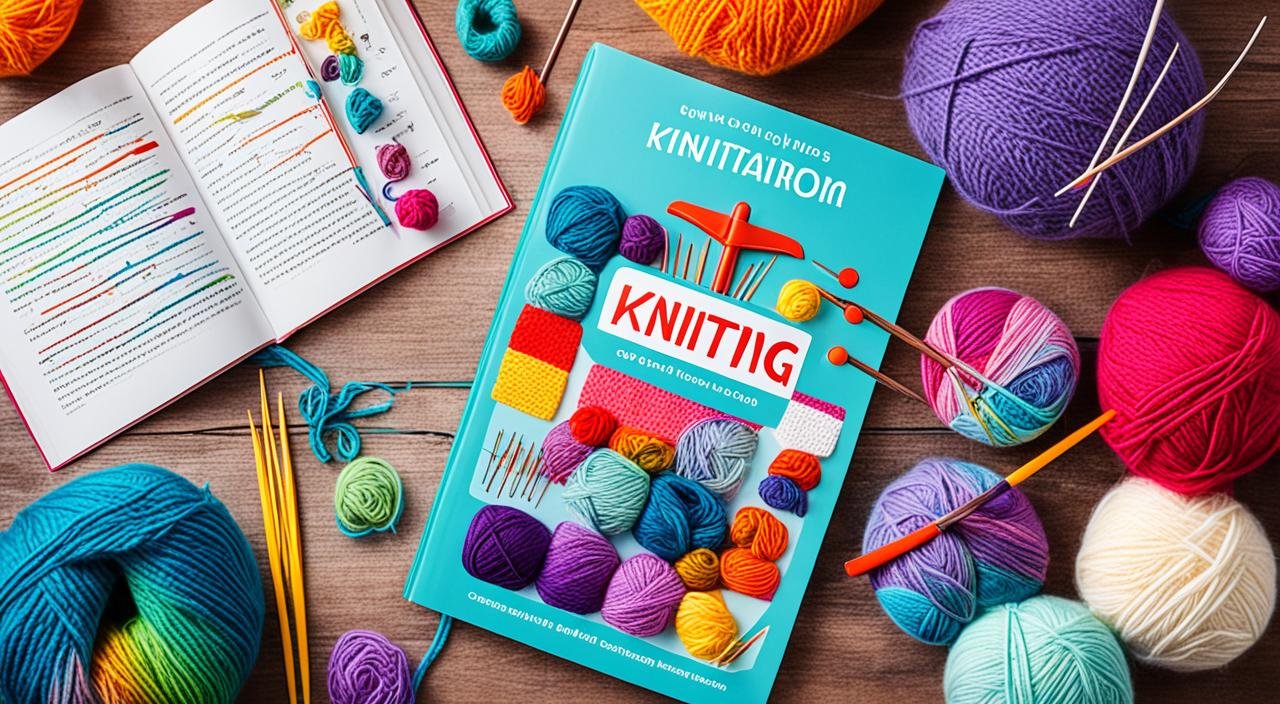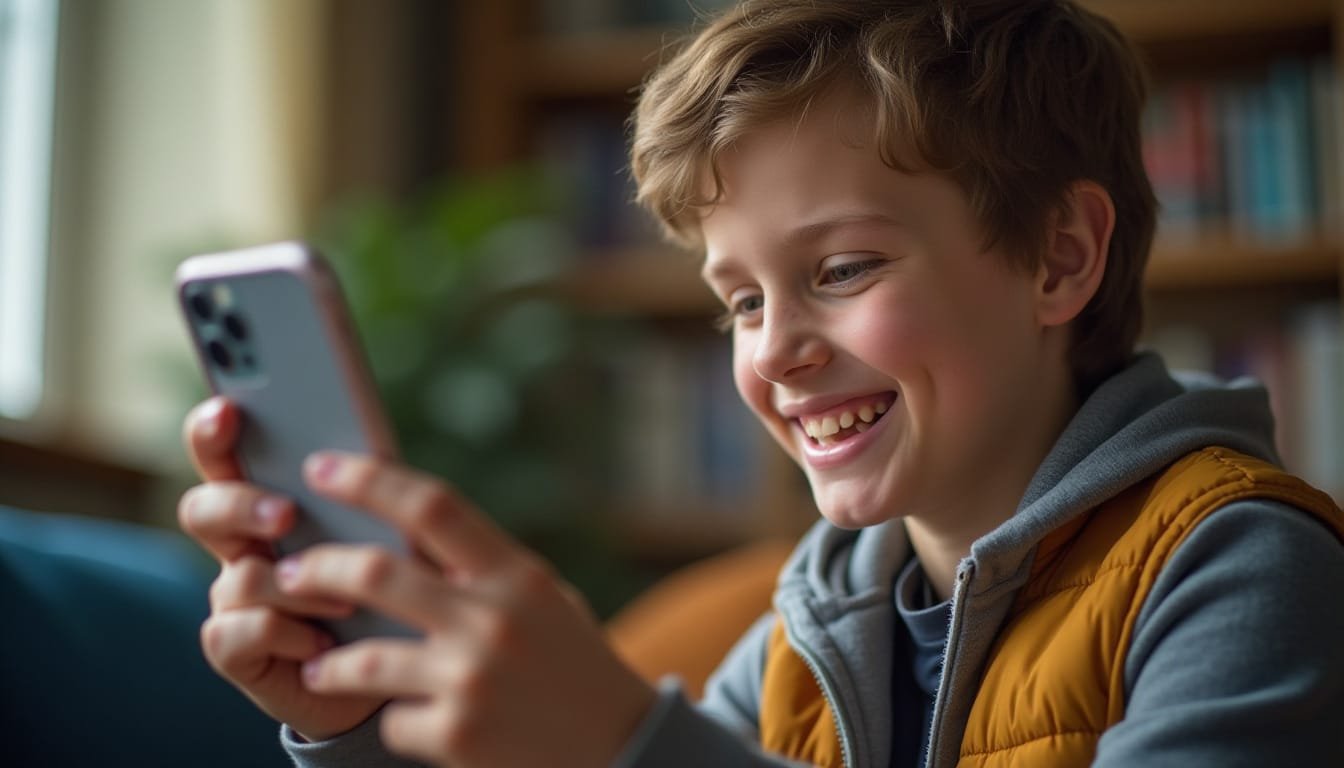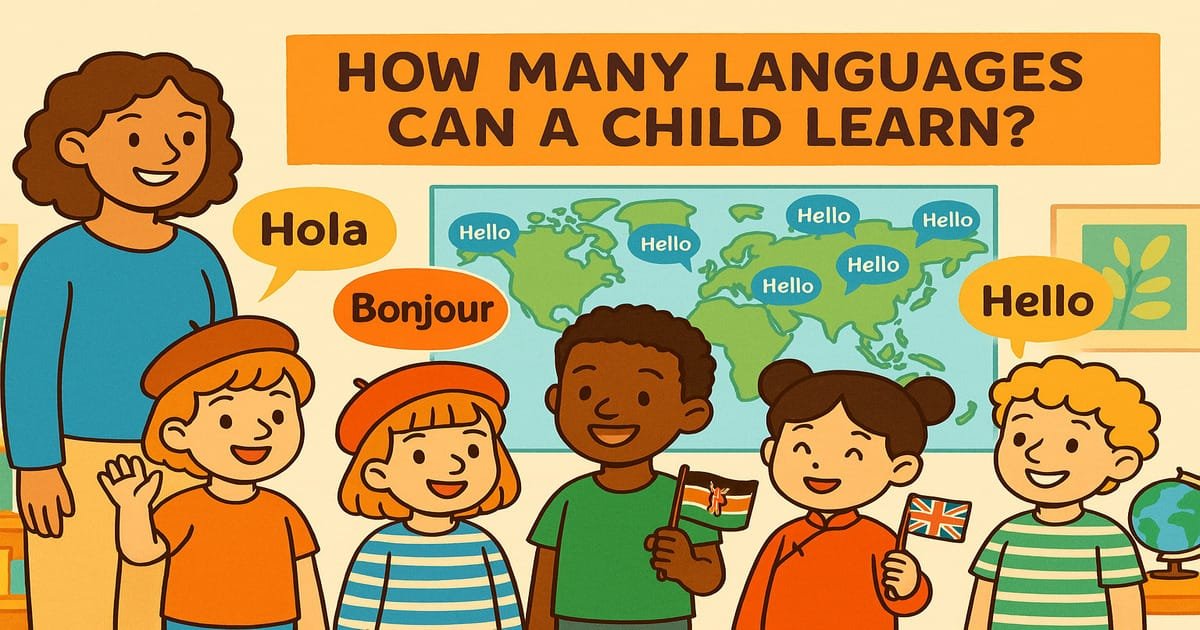Do you remember the first time you held a pair of knitting needles in your hands? The anticipation, the excitement, the sense of wonder as you began weaving strands of yarn into something beautiful. Knitting has a magical quality that captivates young and old alike, and now you have the opportunity to share this enchanting craft with your child.
Teaching a child to knit is more than just passing on a skill; it is a way to foster their creativity, develop their concentration, and ignite their imagination. As they master the art of knitting, they will unlock a world of endless possibilities where they can create gifts for loved ones, beautiful accessories for themselves, or even embark on ambitious projects that showcase their newfound skills.
So, how can you inspire your child to embrace the art of knitting and guide them on this exciting journey? In this step-by-step guide, we will explore the best strategies, materials, and techniques for teaching kids to knit. Get ready to embark on a stitching adventure with your little one!
Key Takeaways:
- Teaching a child to knit is a rewarding experience that enhances their creativity and concentration.
- Knitting opens up a world of possibilities for your child to create unique and meaningful projects.
- This step-by-step guide will provide you with the tools and techniques to effectively teach a child to knit.
- By embracing knitting, your child can develop valuable skills that extend beyond the craft itself.
- Get ready to embark on a stitching adventure with your cherished little one!
Benefits of Teaching Kids to Knit
Teaching kids to knit offers a range of benefits, including reducing stress, improving focus, and providing a fun way to practice reading and math skills. Knitting can also be a creative outlet for children and helps develop fine motor skills.
“Teaching kids to knit not only helps them develop essential skills, but it also provides a sense of accomplishment and pride in their creations.”
Knitting requires concentration and focus, which can serve as a calming and meditative activity, reducing stress and promoting relaxation in children. As they learn different stitches and patterns, their concentration skills improve, enabling them to pay attention to details and follow instructions with precision.
Furthermore, knitting offers children a fun and engaging way to practice important academic skills. Counting stitches and rows, following patterns, and understanding the relationship between numbers and needle sizes all contribute to their math skills development. Reading knitting patterns also enhances their reading comprehension and the ability to follow step-by-step instructions.
Knitting fosters creativity in children, allowing them to select colors and design their own projects. It encourages them to experiment with different yarn textures and patterns to create unique and personalized items. The act of transforming a ball of yarn into a wearable or functional item provides a great sense of accomplishment and boosts their self-esteem.
Improved Fine Motor Skills
When kids knit, they use their fingers and hands to manipulate the yarn and needles, stimulating the development of their fine motor skills. The precise movements involved in knitting help strengthen their hand muscles, improve hand-eye coordination, and refine their dexterity. These skills play a crucial role in activities such as writing, drawing, and playing musical instruments.
Through knitting, children also learn essential life skills such as patience, perseverance, problem-solving, and resilience. They come to understand that mistakes are a natural part of the learning process and can be corrected. Knitting allows them to practice resilience as they encounter challenges or unravel mistakes and start again. It teaches them to embrace and learn from setbacks, fostering a growth mindset.
Overall, teaching kids to knit offers numerous benefits that go beyond creating beautiful handmade items. It promotes focus, creativity, and skill development, while also providing a calming and enjoyable activity. By introducing children to knitting, we empower them with a lifelong skill and a means of self-expression.
Table: Benefits of Teaching Kids to Knit
| Benefits | Description |
|---|---|
| Reduced Stress | Knitting promotes relaxation and helps children manage stress. |
| Improved Focus | Knitting requires concentration, enhancing children’s ability to focus and pay attention to details. |
| Practice Reading and Math Skills | Following knitting patterns improves reading comprehension and enhances math skills such as counting and measurement. |
| Creative Outlet | Knitting allows children to express their creativity through color and design choices. |
| Fine Motor Skills Development | The precise movements in knitting enhance hand-eye coordination and refine fine motor skills. |
Choosing the Right Materials for Kids
When teaching kids to knit, it’s important to choose materials that are easy for them to work with. The right knitting supplies can enhance their experience and make the process more enjoyable. Here are some recommendations for kid-friendly knitting materials:
Kid-Friendly Yarn
Kid-friendly yarn is soft, colorful, and easy to handle. Worsted weight wool is a great choice for children because it is less slippery compared to other yarn types, making it easier for their small hands to control the knitting needles. Additionally, self-striping yarns create beautiful patterns automatically, which can keep children engaged and excited about their projects.
Easy-to-Use Needles
When it comes to knitting needles for kids, size 8 needles are ideal. They are larger in size, allowing for a better grip and reducing the chances of dropped stitches. These needles provide a good balance between thickness and ease of use, making it simpler for kids to manipulate the yarn and create their stitches.
Suitable Projects for Kids
Starting with simple and achievable projects is crucial to keep kids motivated and interested in knitting. Fingerless mitts and headbands are great beginner projects that allow children to practice basic knitting techniques while creating functional and fashionable items. These projects offer quick gratification and a sense of accomplishment, boosting their confidence as they progress in their knitting journey.
| Materials | Recommended Options |
|---|---|
| Yarn | Worsted weight wool, self-striping yarn |
| Knitting Needles | Size 8 needles |
| Projects | Fingerless mitts, headbands |
Getting Started with Knitting Basics
Are you ready to introduce your child to the wonderful world of knitting? Teaching kids to knit is a fun and rewarding experience that can help develop their creativity, focus, and fine motor skills. In this section, we will discuss the essential knitting basics for kids, including how to start with knitting, teaching kids to cast on, and teaching them the knit stitch.
Teaching the Basic Knitting Rhyme
Before diving into the practical aspects of knitting, it’s helpful to introduce your child to the basic knitting rhyme. This simple and catchy phrase can serve as a memorable way for them to remember the steps involved in knitting. Try using a rhyme like:
“In through the front door, run around the back, peek through the window, and off jumps Jack!”
By repeating this rhyme together, your child will start to associate each action with a step in the knitting process.
Casting On and Teaching the Knit Stitch
The first step in knitting is to cast on, which creates the foundation row of stitches on the needle.
To make it easier for your child, you can start by casting on for them or use a pre-cast-on needle. Show them how to hold the yarn and needle, then guide their hands as they make their first stitches.
Once they are comfortable with casting on, it’s time to introduce them to the knit stitch. Demonstrate how to hold the needle and yarn, and guide them through each step as they knit their first stitches. Encourage them to practice and remind them of the knitting rhyme as a helpful guide.
Joint Projects and the “Knitting Fairy”
To keep your child motivated and engaged with knitting, consider starting joint projects where you knit a row and they knit a row. This way, they can see their progress and feel a sense of accomplishment as the project grows.
Another creative idea is to involve the “knitting fairy.” This imaginary character adds rows to your child’s project overnight, making it seem like their knitting magically grew while they were sleeping. This surprise can be a delightful way to keep them excited about knitting.
It’s important to emphasize that knitting is a process, and finishing projects isn’t necessary. Encourage your child to enjoy the journey of knitting and explore their creativity. Remember, the focus should be on having fun and learning new skills.
| Tips for Getting Started with Knitting Basics | |
|---|---|
| Teach the basic knitting rhyme | Introduce your child to a simple knitting rhyme to help them remember the steps involved. |
| Start with casting on | Guide your child through casting on, creating the foundation row of stitches. |
| Teach the knit stitch | Demonstrate how to knit and guide your child through their first stitches. |
| Try joint projects | Engage your child by working on joint knitting projects, alternating rows with them. |
| Introduce the knitting fairy | Create excitement by having the “knitting fairy” add rows to your child’s project overnight. |
| Emphasize the process | Remind your child that knitting is a journey and finishing projects isn’t the main goal. |
Tips for Teaching Kids to Knit
Teaching knitting to young kids can be a fun and rewarding experience for both the child and the teacher. To ensure a successful learning journey, here are some effective strategies and tips for teaching kids to knit:
- Start with Easy Projects: Begin by introducing your child to simple knitting projects like bookmarks or doll blankets. Starting with easy projects allows them to practice basic knitting techniques while feeling accomplished and motivated.
- Let Them Choose: Encourage your child to choose their own knitting projects. Allowing them to have a say in what they create ensures their interest and excitement remain high. Whether it’s a scarf, hat, or stuffed animal, giving them the freedom to choose empowers their creativity.
- Embrace Mistakes: It’s natural for beginners, especially kids, to make mistakes while knitting. Instead of rushing to fix every error, teach them the importance of learning from mistakes and finding solutions themselves. This nurtures problem-solving skills and builds resilience.
- Patience is Key: Be patient with your child as they learn to knit. Understand that everyone progresses at their own pace, and knitting is a skill that requires practice and time. Offer encouragement, celebrate their progress, and remind them to enjoy the process rather than focusing solely on the end result.
- Create a Supportive Environment: Make knitting a positive and enjoyable experience by creating a nurturing environment. Offer praise for their efforts, be available to answer questions, and foster a sense of community by involving them in knitting circles or classes.
By implementing these tips and strategies, you can effectively teach knitting to children and inspire a lifelong love for the craft.
Additional Resources for Teaching Kids to Knit

When teaching kids to knit, it’s helpful to have access to additional resources that provide step-by-step instructions and inspiration. Whether you’re a parent, teacher, or knitting enthusiast, these resources can help make the learning process fun and engaging for kids. Below are some recommended books and online videos that can assist you in teaching kids how to knit:
Recommended Books for Teaching Kids Knitting
| Book Title | Author |
|---|---|
| Kids Knitting | Melanie Fallick |
| Kids’ Knitting Workshop | Susan B. Anderson |
These books offer clear instructions, accompanied by colorful illustrations, making it easy for kids to follow along. They include a variety of beginner-friendly knitting projects that gradually increase in complexity, ensuring that kids stay motivated and engaged.
Knitting Videos for Kids
Online videos can be a valuable resource when teaching kids to knit. They provide visual demonstrations and tips that enhance the learning experience. One highly recommended video resource is the GoodKnitKisses instructional videos.
“The GoodKnitKisses videos offer simple and easy-to-follow tutorials specifically designed for kids. They cover essential knitting techniques and provide step-by-step instructions for various knitting projects. These videos are engaging and encouraging, making learning to knit an enjoyable experience for young learners.” – Knitting Enthusiast
By utilizing these resources, you can enhance your teaching approach and empower kids to develop their knitting skills with confidence.
In the next section, we will explore age considerations for teaching kids to knit and discuss the ideal age range for introducing this creative and rewarding craft.
Age Considerations for Teaching Kids to Knit
When it comes to teaching kids to knit, understanding the appropriate age range is essential. While hand-eye coordination and attention span develop at different rates for each child, many children show readiness around the age of 6. However, it’s important to remember that some children may not be ready until a few years later.
Children at this age are more likely to have the dexterity required for knitting and are better able to follow instructions. They also have the attention span necessary to complete knitting projects without becoming overly frustrated. Introducing knitting at a younger age can be challenging, as children may struggle with complex hand movements or become easily distracted.
It’s crucial to consider the child’s individual readiness and interest in learning to knit. Observing their fine motor skills, concentration abilities, and overall enthusiasm for crafts can help determine if they are ready to start knitting. Encouraging their curiosity and offering gentle guidance will ensure a positive and rewarding experience.
Benefits of Teaching Kids to Knit at a Young Age
“Starting kids on knitting when they are young allows them to develop a lifelong love for the craft. It not only nurtures their creativity but also strengthens their focus and concentration skills.”
– Jane Thompson, Knitting Instructor
Teaching knitting at a young age has numerous benefits. Not only does it foster creativity and self-expression, but it also improves concentration and fine motor skills. Knitting teaches patience and perseverance, as children must follow a pattern and work through challenges. Additionally, it provides a sense of accomplishment and pride when a project is completed.
By starting kids on knitting early, we enable them to develop a lifelong passion for the craft. They gain a hobby that brings joy, relaxation, and a sense of accomplishment throughout their lives. Knitting can become a cherished skill that allows children to express themselves artistically, explore color, texture, and design, and even create handmade gifts for their loved ones.
Tips for Introducing Knitting to Young Children
- Choose age-appropriate knitting materials, such as larger needles and soft, chunky yarns that are easier for small hands to manipulate.
- Start with simple knitting projects, like scarves or dishcloths, to maintain their interest and build confidence.
- Use colorful and visually appealing materials to capture their attention and make the process more engaging.
- Set aside dedicated knitting time and create a calm and inviting environment with soothing music or a cozy corner.
- Encourage children to take breaks when needed and provide positive reinforcement for their progress.
Remember, teaching kids to knit is not just about the end result; it’s about enjoying the journey together. Celebrate their efforts, regardless of the outcome, and focus on the joy of creating and learning. With patience, encouragement, and the right approach, teaching knitting to young children can be a rewarding experience for both the child and the instructor.
Conclusion
Teaching a child to knit is a wonderful experience that has numerous benefits for both the child and the teacher. Through knitting, children not only develop important skills such as focus, creativity, and fine motor skills, but they also engage in a calming and enjoyable activity. By following the easy steps and tips outlined in this article, you can inspire a love for crafting in children and help them become confident knitters.
One of the key benefits of teaching kids to knit is the promotion of focus and concentration. Knitting requires children to follow patterns and count stitches, fostering their ability to pay attention to detail. Moreover, knitting encourages creativity as children can choose their own colors and designs, allowing for personal expression and individuality. It’s a wonderful way to ignite their imagination and enhance their problem-solving skills.
Additionally, teaching kids to knit helps in developing essential fine motor skills. The repetitive movements of knitting help strengthen hand muscles and improve dexterity. This can be particularly beneficial for children with coordination challenges or those who need extra support in building their motor skills. By engaging in knitting, children also experience a sense of accomplishment and pride when they complete their knitting projects.
FAQ
How can I teach a child to knit?
Teaching a child to knit can be a fun and rewarding experience. Start by choosing kid-friendly materials and simple projects. Teach them the basic knitting rhyme or a simple knitting rhyme to help them remember the steps. It’s also important to be patient and let them learn at their own pace.
What are the benefits of teaching kids to knit?
Teaching kids to knit offers numerous benefits. It helps reduce stress, improve focus, and develop fine motor skills. Knitting also provides a creative outlet for children and helps them practice reading and math skills.
How do I choose the right materials for kids?
When teaching kids to knit, it’s important to choose materials that are easy for them to work with. Worsted weight wool and size 8 knitting needles are recommended for their ease of use. Wool is easier to knit than cotton, and self-striping yarns can keep children engaged.
How do I get started with teaching knitting basics?
To teach a child how to knit, it’s helpful to start by teaching them how to cast on and the knit stitch. Use joint projects where you knit a row and they knit a row to keep them motivated. You can also involve the “knitting fairy” to add rows overnight. Emphasize that knitting is a process, and finishing projects isn’t necessary.
What are some tips for teaching kids to knit?
Some tips for teaching kids to knit include starting with easy projects like bookmarks or doll blankets, allowing them to choose their own knitting projects, and resisting the urge to fix every mistake. Be patient and let kids learn at their own pace, and encourage them to have fun and enjoy the process.
Are there any additional resources for teaching kids to knit?
Yes, there are several resources available to assist with teaching kids to knit. Recommended books include “Kids Knitting” by Melanie Fallick and “Kids’ Knitting Workshop” by Susan B. Anderson. Online videos, such as the GoodKnitKisses instructional videos, can also be helpful.
What is the ideal age for teaching kids to knit?
The ideal age for teaching kids to knit varies from child to child. Many children develop the necessary hand-eye coordination and attention span around age 6, but some may not be ready until a few years later. It’s important to consider the child’s individual readiness and interest in learning to knit.
What are the final thoughts on teaching kids to knit?
Teaching a child to knit can be a rewarding and beneficial experience for both the child and the teacher. Knitting promotes focus, creativity, and skill development while providing a calming and enjoyable activity. By following these steps and tips, you can inspire a love for crafting in children and help them become confident knitters.





